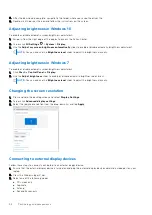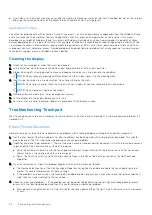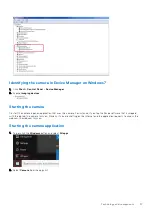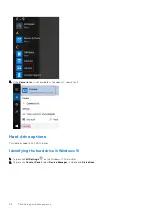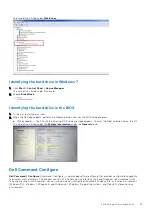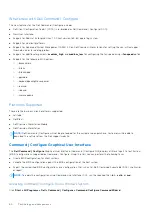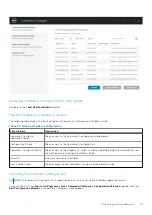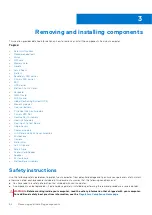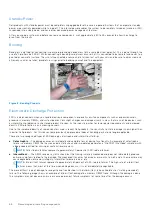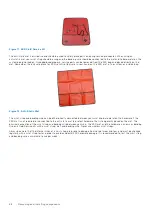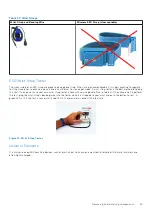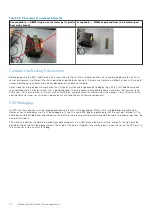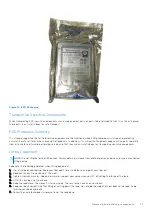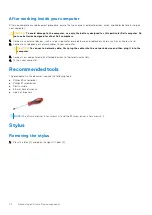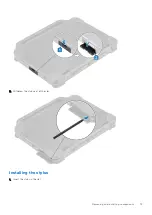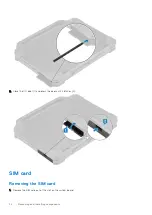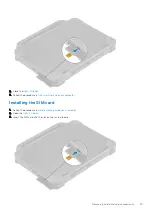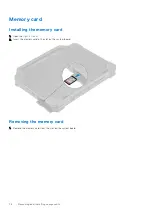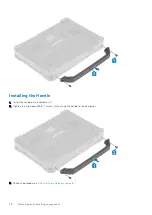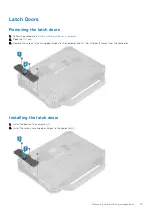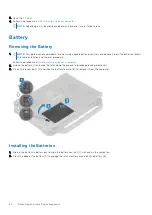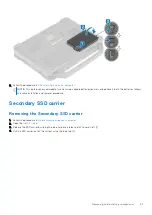
Standby Power
Dell products with standby power must be completely unplugged before the case is opened. Systems that incorporate standby
power are essentially powered while turned off. The internal power enables the system to be remotely turned on (wake on LAN),
suspended into a sleep mode, and have other advanced power management features.
After you unplug a system and before you remove components, wait approximately 30 to 45 seconds to allow the charge to
drain from the circuits.
Bonding
Bonding is a method for connecting two or more grounding conductors to the same electrical potential. This is done through the
use of a Field Service ESD kit. When connecting a bonding wire, always ensure that it is connected to bare metal and never to a
painted or non-metal surface. The wrist strap should be secure and in full contact with your skin, and be sure to always remove
all jewelry such as watches, bracelets, or rings prior to bonding yourself and the equipment.
Figure 8. Bonding Properly
Electrostatic Discharge Protection
ESD is a major concern when you handle electronic components, especially sensitive components such as expansion cards,
processors, memory DIMMs, and system boards. Very slight charges can damage circuits in ways that may not be obvious, such
as intermittent problems or a shortened product life span. As the industry pushes for lower power requirements and increased
density, ESD protection is an increasing concern.
Due to the increased density of semiconductors used in recent Dell products, the sensitivity to static damage is now higher than
in earlier Dell products. For this reason some previously approved methods of handling parts are no longer applicable.
There are two recognized types of ESD damage: catastrophic and intermittent failures.
●
Catastrophic
—The damage causes an immediate and complete loss of device functionality. An example of catastrophic
failure is a memory DIMM that has received a static shock and immediately generates a "No POST/No Video" symptom with
a beep code emitted for missing or nonfunctional memory.
NOTE:
Catastrophic failures represent approximately 20 percent of ESD-related failures.
●
Intermittent
—The DIMM receives a static shock, but the tracing is merely weakened and does not immediately produce
outward symptoms related to the damage. The weakened trace may take weeks or months to melt, and in the meantime may
cause degradation of memory integrity, intermittent memory errors, etc.
NOTE:
Intermittent failures represent approximately 80 percent of ESD-related failures. The high rate of intermittent
failures means that most of the time when damage occurs, it is not immediately recognizable.
The more difficult type of damage to recognize and troubleshoot is the intermittent (also called latent or “walking wounded”)
failure. The following image shows an example of intermittent damage to a memory DIMM trace. Although the damage is done,
the symptoms may not become an issue or cause permanent failure symptoms for some time after the damage occurs.
66
Removing and installing components

